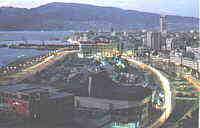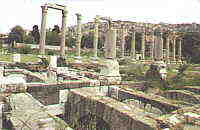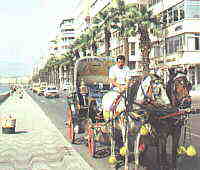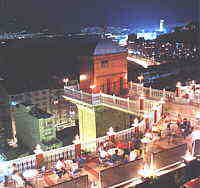Izmir
Birthplace of Homer
 Alsancak  Konak Clock Tower |
 Izmir Agora  First Kordon  Asansör |
Known in Turkish as "Beautiful Izmir", the city lies at the head of a long and narrow gulf furrowed by ships and yachts. The climate is mild and in the summer the constant and refreshing sea breezes temper the sun's heat. Behind the palm-lined promenades and avenues which follow the shoreline. the city, in horizontal terraces, gently ascends the slopes of the surrounding mountains.The third largest city in Turkey, Izmir's port is second only to Istanbul's. A cosmopolitan and lively city all year round, during the International Arts Festival (June/July) and the International Fair (August/Sept), Izmir bursts with an added vibrancy. The original city was established in the third millennium B.C. (at present day Bayrakli), and at that time shared, with Troy, the most advanced culture in Western Anatolia. By 1500 B.C. it had fallen under the influence of Central Anatolia's Hittite Empire. In the first millennium B.C. Izmir, then known as Smyrna, ranked as one of the most important cities of the lonian Federation; during this period - one of the city's most brilliant - Homer resided here.
Lydian conquest of the
city, around 600 B.C., brought this period to an end,
and lzmir remained little more than a village throughout
the Lydian and the subsequent 6th century B.C. Persian
rule. In the fourth century B.C. a new city was built at
the instigation of Alexander the Great on the slopes of
Mt. Pagos (Kadifekale). Izmir's Roman period, from the
first century B.C., gave birth to its second great era.
Byzantine rule followed in the fourth century and lasted
until the Seljuk conquest in the 11th century In 1415,
under Sultan Mehmet Celebi, Izmir became part of the
Ottoman Empire.
|